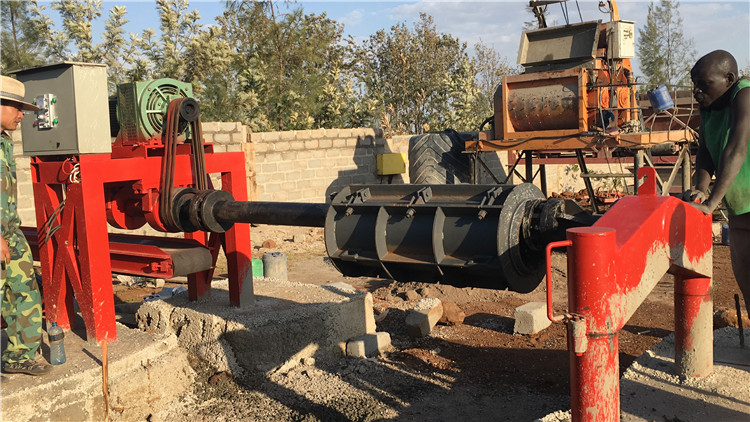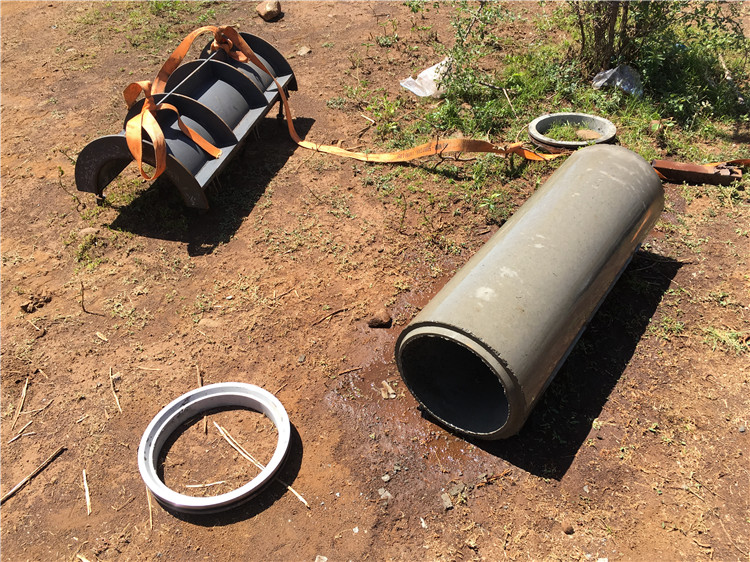News
How to Install Reinforced Concrete Pipe (RCP)

Learn What to Do and What to Avoid During RCP Installation
Reinforced concrete pipes, or RCPs, are used in storm sewer systems and water sewer systems. The installation of these pipes is challenging because they are heavy and require heavy equipment to move and place them. This article will cover best practices for RCP handling and installation.
Reinforced concrete pipes should be managed carefully to prevent damaging the bell (the wide or flared end of the RCP) and spigot (the narrow end that is inserted into the bell of an adjoining pipe).
RCPs not be dragged to the site. It is recommended that you unload the pipes using a nylon sling or other certified material that can support the weight of the pipe, and be balanced precisely in the sling.
Before starting the installation process, be sure to have the trench prepared to accommodate at least two pipes. By doing this you can verify that the installation will meet the required slope and that subsequent trenching will not impact the pipe being installed nor compromise worker safety.
After every RCP is installed you must check line and grade levels. Remember that the trench must be wide enough allowing workers to install and manage the pipe safely. Do not adjust the pipe alignment or grade with pipe in the home position. Remember that during the installation process the pipes must not be supported on bells as it could damage them. The bedding material shall be free of debris and must provide a uniformly level surface.
Before laying out the RC pipe, you will need to carefully clean all dirt from the joining surfaces of the bell of the pipe. If the surface is not properly cleaned it may prevent proper homing of the pipe.
Check with the RCP manufacturer for suggested lubricants that should be used. Lubricant should be sufficient to prevent the gasket from rolling away and damaging the bell end. Clean the spigot or tongue end of the pipe so the gasket will seal adequately. Lubricate the tongue end of the pipe, including the gasket recess. When the lubricating grease is insufficient, the gasket may twist out of recess. Remember to lubricate the gasket before putting it on the tongue of the RCP.
Installing RCP
Install the gasket and use a round object to equalize the gasket stretch. Pass the object several times along the circumference to make sure everything is in place. If the gasket is not stretched, the pipe could leak at the joint or the bell may crack. Align bell and spigot, and check that the gasket is in contact with the entry taper.
Make sure the pipe is aligned by using surveying or leveling instruments. When the pipe to be installed has a small diameter, place a wood block across the bell end of the pipe and push using a wedge bar.
This should move the pipe slowly into place. Keep pushing until the pipe is completely installed. If the pipe diameter is somewhat larger and heavier, you might want to use pipe pullers to install the pipe.
Backfill material should be placed carefully along the pipe and compacted thoroughly. Backfill material should be placed evenly in lifts on both sides of the pipe and fill the trench up one foot above the top of the pipe.
Material must not be bulldozed into the trench or dropped directly on top of the pipe. Do not use backfill material with large boulders as they will not be compacted and could damage the pipe.
Finally do no operate heavy construction equipment over the pipe until adequate backfill is in place or the pipe is deep enough that it will not be damaged.

Leave Message
If you have any problems or questions about our products or need our support and assistance, please feel free to write us, we will reply to you within 24 hours, and never reveal your information to the third party. Thank you!
PRODUCTS SEARCH
Quickly find productPRODUCTS LIST
- QT4-25 block making machine
- QMJ-10A Egg-laying Block Ma...
- QTY4-30 Egg Laying Block Ma...
- QTJ4-40 Semi-auto Block Mak...
- QTJ4-35 Semi-auto Block Mak...
- QTJ4-26 Semi-auto Block Mak...
- QTJ4-25 Auto Block Making M...
- Concrete Mixing Pump
- Trailer Concrete Pump
- HY600 Self-loading Concrete...
